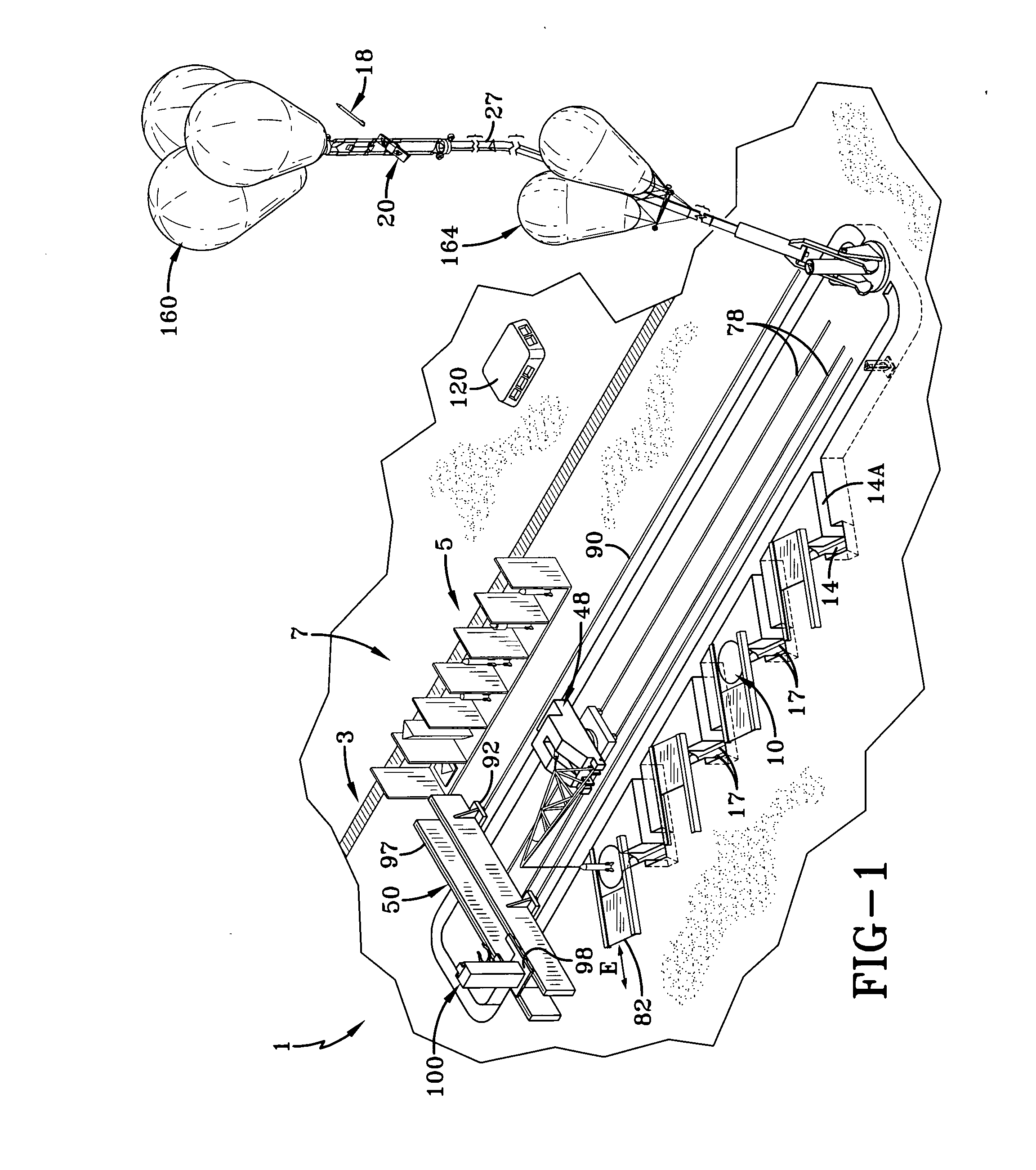Rocket Launch System and Supporting Apparatus
a technology of rocket launch system and supporting apparatus, which is applied in the direction of rocket/towing gear, cosmonautic vehicles, nuclear elements, etc., can solve the problems of reducing the amount of power that actually reaches the climbing vehicle, and supplying the vehicle climbing the cable with sufficient energy. , to achieve the effect of reducing the mass of material
- Summary
- Abstract
- Description
- Claims
- Application Information
AI Technical Summary
Benefits of technology
Problems solved by technology
Method used
Image
Examples
Embodiment Construction
[0130]The preferred embodiment of the invention is initially described in general terms referring to some components described in more detail below. The general components are shown in such general terms in FIGS. 1, 1A and 1B. The preferred embodiment is a rocket launch system 1 which includes apparatus for moving a rocket 18 to be launched. Rocket 18 is first either in a container or rocket-transporting device such as a carriage 20 or is to be loaded into carriage 20, from storage racks 7. Carriages 20 have cylindrical lengthwise bores into open-ended continuous tubes 836 (FIGS. 13, 13C) which are disposed and held in place for receiving a rocket 18. Carriages 20 are weatherproof and have a longitudinal axis, which is the same longitudinal axis of tube 836. Rockets 18, components thereof, and carriages 20 which may or may not be loaded with rockets 18, are conveyed to storage racks 7 by an appropriate transport railing car on a railway 3 to an off loading area 5. A crane 48 carries...
PUM
 Login to View More
Login to View More Abstract
Description
Claims
Application Information
 Login to View More
Login to View More - R&D
- Intellectual Property
- Life Sciences
- Materials
- Tech Scout
- Unparalleled Data Quality
- Higher Quality Content
- 60% Fewer Hallucinations
Browse by: Latest US Patents, China's latest patents, Technical Efficacy Thesaurus, Application Domain, Technology Topic, Popular Technical Reports.
© 2025 PatSnap. All rights reserved.Legal|Privacy policy|Modern Slavery Act Transparency Statement|Sitemap|About US| Contact US: help@patsnap.com



